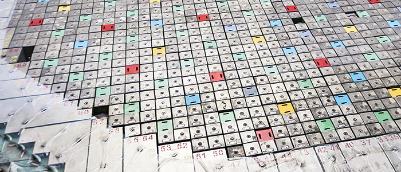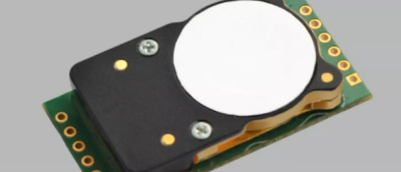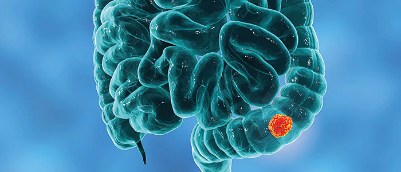Research impact

We have created robust pathways that utilise our facilities and capitalise on mechanisms for knowledge transfer to build partnerships with industry and to achieve impact from our research.
Key strategic relationships have led to commercialisation and industrially funded research, with impact that is manifest in multiple formats including licensing of intellectual property, formation of spin-out companies, direct co-development work with industry partners and through consultancy.
In REF 2021, 94.4% of our research impact was recognised as 'world-leading' or 'internationally excellent'.
CFD changes aircraft policy guidelines
 Computational fluid dynamics change aircraft policy guidelines, increase airport capacity and deliver new capability to industry engineers
Computational fluid dynamics change aircraft policy guidelines, increase airport capacity and deliver new capability to industry engineers
Lead: Dr George Barakos
New methods in computational fluid dynamics (CFD) developed by Professor Barakos have delivered enhancements in understanding of aircraft / wind turbine and aircraft / aircraft wake interactions. These have impacted policy by defining safe separations of aircraft and wind turbines in addition to new guidelines that ensure safe aircraft separations at major airports for fixed and rotary wing aircraft (RECAT-EU). These guidelines have not only enhanced airport safety but also capacity. Aircraft separations for landing and take-off have been reduced at Europe’s largest airports, generating millions of pounds of additional revenue per year. The new CFD methods are now also embedded in the design and analysis of Leonardo’s current and future helicopters, providing unsurpassed capability and securing the future of their helicopter division.
Research division: Autonomous Systems and Connectivity
Origami diagnostics
 Origami diagnostic tests enable rapid, low-cost diagnosis of infectious diseases in low- and middle-income countries
Origami diagnostic tests enable rapid, low-cost diagnosis of infectious diseases in low- and middle-income countries
Leads: Professor Jonathan Cooper, FREng, FRSE; Dr Julien Reboud
Infectious diseases are the leading cause of mortality amongst people in low- and middle- income countries (LMICs). High disease mortality rates are often linked to prohibitive cost and resource obstacles to diagnosis. UofG researchers have developed a unique paper-microfluidic diagnostic platform (manufactured by UK SME, Epigem) that uniquely uses origami-folding lateral flow to bring rapid and accurate molecular testing to low-resource under-served rural areas in Uganda and beyond. The device enables DNA analysis, which is normally performed in a laboratory, to be carried out in rural under-served communities more rapidly and accurately than the current gold- standard field-based methods. Both healthcare and policy have changed in Uganda as a result of the devices being used to detect malaria and schistosomiasis, with economic and social impacts for stakeholders/partners. In addition, this project is contributing to innovation and entrepreneurial activity in the design and delivery of new diagnostic products and services thorough our partners in the Ugandan Industrial Research Institute (UIRI), − a center of excellence for Industrial Research in the East African Community.
Research division: Biomedical Engineering
Research theme: Healthcare technologies
Semiconductor laser products
 Optoelectronics collaboration transforms company to a global supplier/leader in semiconductor laser products
Optoelectronics collaboration transforms company to a global supplier/leader in semiconductor laser products
Lead: Dr Anthony E Kelly
Fibre-based communication is pivotal to global communication and connectivity and requires high- quality lasers to drive the increasing demand. Collaboration between Prof Kelly and Sivers Photonics (formerly Compound Semiconductor Technologies (CST) Global) transformed their business model to allow them to become a world-leading semiconductor laser supplier. The partnership began by focusing on delivery of a high-performance, low-cost laser device for next generation optical access networks, followed by additional novel products for rapidly expanding home and datacenter markets, growing to become Europe’s leading laser supplier, with an 88% turnover increase between 2016-2017. Work broadened to include other products and CSTG was able to enter the Asian market for the first time. The partnership is marked by the seamless flow of graduates, knowledge and expertise between the company and the University for over a decade. CSTG’s strong performance and clear potential for additional growth led to its 2017 acquisition by Sivers IMA. Sivers Photonics has become Europe’s highest volume laser supplier, shipping GBP1 million laser chips/month. It has brought internet access to households around the globe with fibre-to-the-home (FTH) connectivity, currently employs 70 chip fabrication staff at a facility near Glasgow supporting supply chain companies across the UK.
Research division: Electronics and Nanoscale Engineering
Research theme: Connecting People; Quantum Technology
Safe operation of nuclear power stations
 Advanced engineering analysis for safe operation and life extension of nuclear power stations
Advanced engineering analysis for safe operation and life extension of nuclear power stations
Leads: Professor Chris Pearce; Dr Lukasz Kaczmarczyk
University fo Glasgow engineering research has established a new methodology and computational framework to examine brittle crack propagation in the complex environments such as within a nuclear reactor. They have developed analysis software and provided the accompanying technical support for predicting and assessing critical, life-limiting structural integrity issues for civil nuclear reactors in the UK. These have assisted the operator, EDF, in assessing the ongoing safe operation of ageing nuclear power stations and have supported nuclear safety cases for the continued and future operation of stations. As more reactors approach their end of life, this research has helped to identify future issues and influenced plans for inspections. This work has contributed to both securing the UK’s baseload electricity supply (currently ~17% from nuclear) and achieving the UK’s low-carbon energy targets.
Research divisions: Infrastructure and Environment
Commercial gas sensors
 Photonics research delivers improved commercial gas sensors used in the food packaging, aerospace, personal safety systems industries
Photonics research delivers improved commercial gas sensors used in the food packaging, aerospace, personal safety systems industries
Leads: Dr Marc Sorel; Prof David Cumming; Professor Iain Thayne; Dr Matthew Steer
University of Glasgow photonics research developed antimonide-based non-dispersive infrared (NDIR) sensors in collaboration with Gas Sensing Solutions Ltd. The resulting new CO2-sensor products have been strategically important to Gas Sensing Solutions, enabling the company to place their wearable and portable gas sensing products in food packaging, aerospace, personal safety systems markets. This has resulted in sales of >250,000 gas sensors in >46 countries, to customers including NASA. In addition to the commercial and economic impacts for Gas Sensing Solutions and its customers, the antimonide-based sensors are central to healthcare products including N-Tidal, the world's first personal capnometer for created for Scottish product design SME Wideblue Ltd client Cambridge Respiratory Innovations (CRiL). Over 1,000 N-Tidal devices were delivered to NHS hospitals amidst the COVID-19 pandemic. The low power requirements of these CO2 sensors led to their selection by NASA for research at the International Space Station to determine the effects of CO2 on astronauts. This research identified that crew members develop CO2-related symptoms at lower CO2 levels than would be expected terrestrially. The Gas Sensing Solutions/UofG partnership underpins the GBP6 million MIRAGE industrial collaboration project, which has established Scotland at the forefront of the global sensors and imaging market.
Research division: Electronics and Nanoscale Engineering
Research theme: Healthcare technologies; Quantum Technology
Collagen research
 Sausage casing manufacturer's processes and practice revolutionised by collagen research
Sausage casing manufacturer's processes and practice revolutionised by collagen research
Lead: Professor Huabing Yin
Collagen, a protein, is the main component of many sausage casings; however, the variability in collagen quality can cause casings to burst, which is costly and wasteful. UofG research developed ways of testing the physical, mechanical and chemical properties of collagen using atomic force microscopy (AFM) and Raman-microspectroscopic techniques. These methods were shared in a knowledge transfer partnership (KTP) that enabled multinational casings manufacturer Devro to identify the optimal properties of quality sausage casings and to adapt their processing methods to achieve higher-quality casings. The UofG research was also instrumental in Devro’s decision to establish the company’s first Research and Development Department. The research-based improvements in processing of collagen casings resulting from UofG research have facilitated entry to new markets, increased product yield while reducing wastage, and increased annual sales.
Research division: Biomedical Engineering
United Nation's Sustainable Development Goals: 2. Zero Hunger
Advanced software tools
 UofG advanced software tools deliver economic impacts for tech giant Synopsys
UofG advanced software tools deliver economic impacts for tech giant Synopsys
Lead: Prof Asen M Asenov
University of Glasgow Technology Computer-Aided Design (TCAD) software has brought economic impacts to Synopsys Inc. by reducing the development time and costs associated with the design of next-generation silicon semiconductor products, resulting in 5−10% annual growth in Synopsys’ TCAD revenue. Gold Standard Simulations was a UofG spin-out company that pioneered silicon semiconductor design using TCAD. Following six years of successful operation, increasing customer traction and associated expansion, Gold Standard Simulations was acquired by Synopsys Inc., a multinational company and global leader in electronic design automation, in 2016. The TCAD tools are important contributors to UK technology exports. Local economic impact has been generated by establishing a Glasgow-based Synopsys office and operations, increasing the Gold Standard Simulations workforce by 20% and UofG Alumni providing specialist skilled TCAD workforce for Synopsys as it creates over 16 Masters and Doctoral level jobs for highly skilled and highly trained staff in Scotland.
Research division: Electronics and Nanoscale Engineering
Research theme: Quantum Technology
Home-based cancer screening test
 Diagnostic research develops the first digital home-based bowel cancer screening test
Diagnostic research develops the first digital home-based bowel cancer screening test
Leads: Professor Jonathan Cooper, FREng, FRSE; Prof David Cumming
Bowel cancer has become the third most prevalent cancer in China, with >375,000 new cancers/year and ~190,000 deaths/year. Barriers to early detection include the lack of accurate and sensitive screening tests. To overcome this, UofG research developed the first, digital home-based bowel screening test, produced by UofG spin-out compaorigny, ModeDx. Oxford MEStar acquired ModeDx (2016) and developed the test for Chinese markets, led by UofG’s Prof Cooper, as Advisory Board Chair. Having passed clinical trials, gained CE marking and Chinese National Medical Products Administration approval, the device is being mass-produced as a digital health screening product to address the rising challenge of recent growth in bowel cancer prevalence, attributed to China’s aging population and a more westernised lifestyle with increased dietary fat, obesity and physical inactivity.
Research divisions: Biomedical Engineering; Electronics and Nanoscale Engineering
Research theme: Healthcare technologies
High-resolution electron beam lithography
 High-resolution electron beam lithography tools for the specialist laser gratings industry
High-resolution electron beam lithography tools for the specialist laser gratings industry
Leads: Prof Jonathan M Weaver, Dr Douglas Macintyre, Prof Charles Ironside, Prof A. Catrina Bryce Coleman, Prof John H Marsh, Dr Lianping Hou
Researchers at UofG have been at the forefront of advances in nanofabrication since 1978, becoming a world-leader in Electron Beam Lithography (EBL) research. This has resulted in one of the most advanced, large-area, high-resolution capabilities in the world. UofG’s EBL is now one of the core technologies for creating nanoscale patterns, a key fabrication step in the manufacture of chips used in of novel semiconductor lasers and grating-based devices for data communications (datacomms) products, one of the technologies central to modern life. This research has enabled UofG-owned Kelvin Nanotechnology (KNT) to expand its business. More recent UofG research has shown the versatility of EBL in atomic cooling applications for quantum technologies, which are increasingly central to the tool’s commercial exploitation. KNT manufactures gratings for the cutting-edge quantum markets, enabling, for example. customer TMD Technologies Ltd produce the world’s first portable grating magneto-optical trap for quantum sensing and timing applications.
Research division: Electronics and Nanoscale Engineering
Research theme: Quantum Technology

